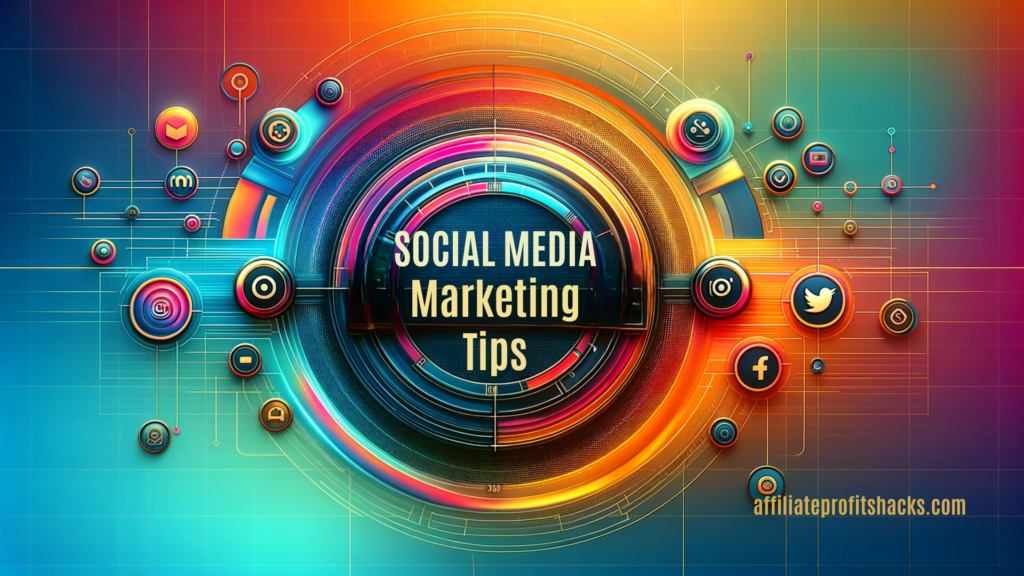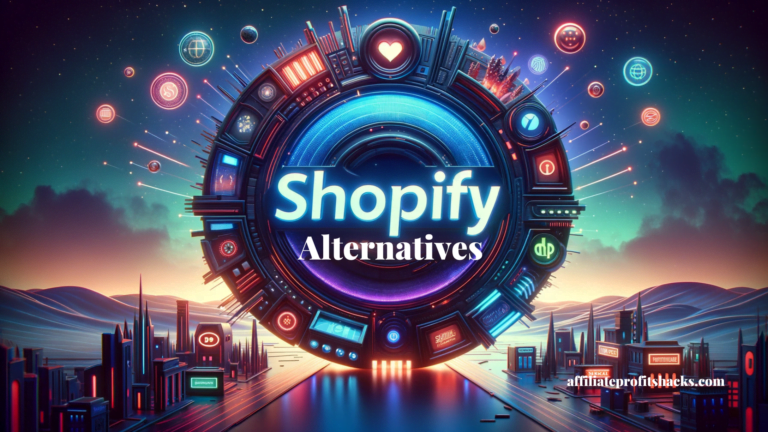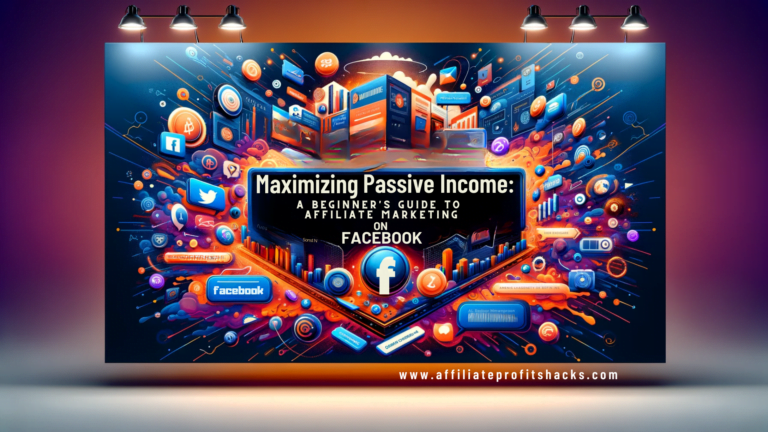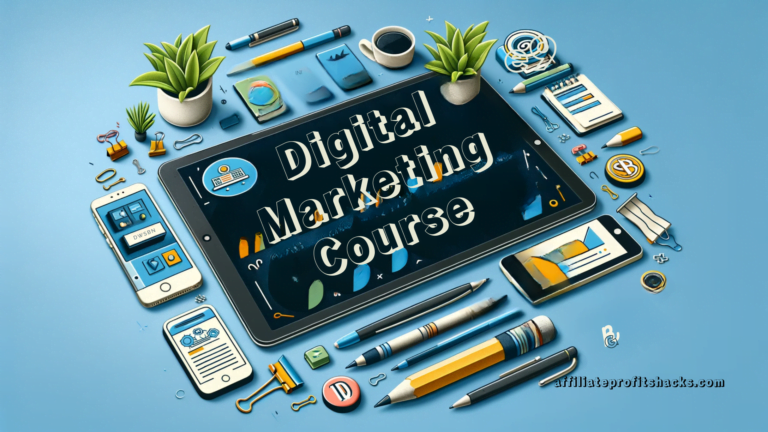Social Media Marketing Tips: Strategies for Boosting Your Brand
Welcome and thank you for checking out my article about Social Media Marketing Tips.
In today’s digital world, social media marketing stands as a cornerstone in building a successful brand. With millions of users scrolling through platforms daily, the potential to reach a vast audience has never been greater. However, the world of social media is dynamic and constantly evolving, making it crucial for marketers to stay informed and adaptable.
Best Recommended and Proven Way to Make Money Online – Click HERE for Instant ACCESS >>

Whether you’re a small business owner, a marketing professional, or simply looking to expand your personal brand, understanding the nuances of social media marketing is key. This article, “Social Media Marketing Tips: Strategies for Boosting Your Brand,” serves as your guide to mastering the art of digital influence. From knowing your audience to staying ahead of trends, we’ll explore essential strategies that will elevate your brand’s presence on social media.
Join us as we delve into actionable tips and insights that will enhance your marketing skills and drive meaningful engagement and growth for your brand.
Know Your Audience
Understanding your audience is the foundation of effective social media marketing. It’s not just about reaching numerous people; it’s about reaching the right people. Those who are genuinely interested in your brand are more likely to engage with your content and eventually become customers.
Start by analyzing who your current followers are. Social media platforms provide tools that allow you to delve into your audience’s demographics, such as age, gender, location, and even interests. This information is invaluable as it helps you tailor your content to match their preferences. For instance, if your brand resonates more with a younger audience, your content should reflect the trends and styles that appeal to them.
Behavior analysis is another crucial aspect. Pay attention to how your audience interacts with different types of content. Do they prefer videos to text posts? Are they more engaged during certain times of the day? Understanding these patterns will help you optimize your posting schedule and content format.
Furthermore, listening to your audience is key. Social media is not just a platform for broadcasting your messages; it’s also a space for conversation. Monitor comments, messages, and mentions to gauge your audience’s interests and concerns. This feedback can guide your content strategy and help you create more relevant and engaging posts.
Knowing your audience is about more than just numbers. It’s about understanding their characteristics, preferences, and behaviors. This knowledge enables you to create content that resonates with them, fostering a stronger connection and ultimately leading to brand growth.
Leveraging Different Social Media Platforms for Diverse Strategies
In the diverse world of social media, each platform offers unique features and audiences, making it crucial to tailor your marketing strategies accordingly. From Facebook’s vast user base to Instagram’s visually driven content, understanding the strengths of each platform can greatly enhance your marketing efforts.
Facebook: The Versatile Giant
Facebook, with its extensive user base, offers opportunities for a wide range of content, from text posts and photos to live videos and stories. It’s an excellent platform for building community through groups and pages, allowing for detailed audience targeting and robust analytics. Whether you’re running a local business or a global brand, Facebook’s versatile features cater to a broad spectrum of marketing needs.
Instagram: A Visual Storyteller’s Paradise
Instagram’s emphasis on visuals makes it perfect for brands with strong visual content. Here, you can leverage high-quality images, short videos, and stories to engage your audience. The platform’s features like Instagram Shopping and IGTV open up avenues for both storytelling and direct sales, making it ideal for lifestyle, fashion, and food brands.
Twitter: The Pulse of Real-time Engagement
Twitter excels in real-time communication and is ideal for brands that frequently engage in topical, time-sensitive content. Its fast-paced nature suits quick updates, announcements, and customer service interactions. With Twitter, you can join trending conversations, use hashtags effectively, and reach an audience interested in staying on the pulse of current events and trends.
LinkedIn: The Professional Networking Hub
LinkedIn stands out as the go-to platform for B2B marketing and professional content. It’s ideal for sharing industry insights, company news, and professional achievements. The platform also offers targeted advertising and networking opportunities, making it invaluable for establishing thought leadership and connecting with a professional audience.
TikTok: Capturing the Youthful Spirit
TikTok, known for its short-form video content, appeals predominantly to a younger audience. Its unique algorithm offers a high potential for viral content, making it a promising platform for brands looking to tap into youthful energy and creativity. Innovative, entertaining content performs well on TikTok, offering a new avenue for brands to express their more playful and spontaneous side.
Leveraging the unique strengths of different social media platforms can significantly enhance your marketing strategy. By understanding and utilizing the distinct features of platforms like Facebook, Instagram, Twitter, LinkedIn, and TikTok, you can create diverse, platform-specific strategies that resonate with varied audiences and achieve different marketing objectives.
Create Compelling Content
Once you understand your audience, the next step is to craft content that captivates and engages them. The key here is not just creating good content, but content that resonates with your audience, fitting seamlessly into their interests and needs.
Firstly, consider the types of content that align with your brand and audience. This could range from informative blog posts and eye-catching images to engaging videos and interactive polls. The goal is to provide variety while maintaining a consistent theme that reflects your brand’s identity. For example, if you’re a fitness brand, your content might include workout tutorials, health tips, and success stories from your clients.
Consistency in your content strategy is vital. It’s not just about posting regularly, but about maintaining a consistent voice and style that your audience can recognize and relate to. This consistency builds trust and familiarity, turning casual followers into loyal fans.
Storytelling is another powerful tool in content creation. Stories create emotional connections with your audience. They can be about your brand’s journey, customer experiences, or even day-to-day operations. These stories don’t have to be complex; even simple, relatable anecdotes can significantly impact your audience’s engagement with your brand.
It’s important to keep in mind that social media is a two-way street. Encourage your audience to share their thoughts and experiences. This provides you with valuable feedback and increases engagement and fosters a sense of community among your followers.
Best Recommended and Proven Way to Make Money Online – Click HERE for Instant ACCESS >>
Creating compelling content is a blend of understanding what your audience enjoys, maintaining a consistent and recognizable brand voice, and engaging them through storytelling and interaction. Mastering these elements can significantly enhance your brand’s presence on social media.
Utilize Analytics
Understanding the impact of your social media strategy is crucial, and this is where analytics come into play. Analytics tools provided by social media platforms offer a wealth of data that can help you measure the success of your campaigns and refine your strategies.
Tracking engagement is the first step in utilizing analytics. Engagement metrics like likes, shares, comments, and views give you a clear picture of how your audience interacts with your content. These metrics are not just numbers; they are insights into what your audience finds interesting or valuable. For example, a post with a high number of shares might indicate that your audience finds it particularly relatable or useful.
Evaluating the effectiveness of your campaigns is another critical aspect of using analytics. By analyzing the reach and engagement of your campaigns, you can determine what works and what doesn’t. This evaluation helps in fine-tuning your content and strategy. For instance, if a particular type of post consistently performs well, it’s worth exploring that format further.
Audience Behavior
Analytics also allow you to understand the broader trends in your audience’s behavior. For instance, you might find that certain content performs better at specific times or days of the week. This information can be used to optimize your posting schedule, ensuring that your content reaches the maximum number of people.
It’s important to remember that the goal of using analytics is not just to collect data, but to gain insights that can drive better decision-making. Regularly reviewing and acting on these insights ensures that your social media strategy remains effective and responsive to your audience’s preferences.
Utilizing analytics is about more than tracking numbers; it’s about understanding the story behind those numbers. This understanding enables you to create more targeted, engaging, and effective content, leading to a stronger social media presence for your brand.
Boost Engagement
Engagement is the lifeline of social media marketing, and boosting it requires more than just posting content. It’s about creating a connection with your audience and fostering a community around your brand.
Interaction tactics are essential for boosting engagement. This involves responding to comments, participating in conversations, and even reaching out to followers directly. Such interactions show your audience that you value their presence and opinions, making them feel a part of your brand’s community. For instance, a simple reply to a comment can make a follower feel acknowledged and appreciated.
Community building is another key aspect. Encourage your audience to share their experiences and opinions related to your brand. You can facilitate this by creating hashtags, organizing contests, or starting discussions. These activities increase engagement and help in building a network of followers who share a common interest in your brand.
Remember, engagement is not just about increasing numbers; it’s about building relationships. When your followers feel connected to your brand, they are more likely to become advocates, sharing your content with their own networks and increasing your brand’s reach.
Moreover, engagement is a two-way street. Pay close attention to the feedback and suggestions from your audience. This feedback is invaluable as it provides insights into what your audience likes and dislikes, helping you refine your approach.
Boosting engagement on social media is about building a connection with your audience through interaction and community building. It’s about creating a space where your audience feels valued and heard, leading to a loyal and active community around your brand.
Stay Current with Trends
In the ever-changing landscape of social media, staying current with trends and algorithm changes is crucial for maintaining the visibility and relevance of your content.
Keeping up with social media trends is vital for staying relevant. These trends can include new content formats, emerging platforms, or popular topics within your industry. By staying informed and adapting your content to these trends, you ensure that your brand remains interesting and engaging to your audience. For instance, if short-form video content becomes popular, incorporating it into your strategy could significantly enhance your engagement.
Adapting to algorithm changes is equally important. Social media platforms frequently update their algorithms, which can affect how your content is displayed and who sees it. Staying informed about these changes and adjusting your content strategy accordingly is essential to maintain your reach. For example, if a platform changes its algorithm to favor content with higher engagement, focusing on posts that encourage likes, comments, and shares would be beneficial.
It’s also essential to strike a balance between following trends and staying true to your brand’s identity. While adapting to trends can increase your content’s relevance, it should not come at the cost of losing your brand’s unique voice and message.
Staying current with social media trends and algorithm changes is a dynamic and ongoing process. It requires you to be attentive, adaptable, and creative. Successfully navigating these changes can help keep your brand’s content fresh, relevant, and visible, ensuring continued growth and engagement on social media.
Harnessing the Power of Influencer Collaborations
In the realm of social media marketing, leveraging influencer collaborations can be a game-changer for boosting your brand’s visibility and credibility. Influencers, with their dedicated followers and established trust, can significantly amplify your message and reach.
Identifying the right influencers is the first crucial step. Look for influencers whose values align with your brand and who have an audience that matches your target demographic. The goal is to collaborate with individuals who can authentically represent and endorse your brand, making the partnership beneficial for both parties.
Once you’ve identified potential influencers, the next step is to build a relationship with them. This involves reaching out, discussing your brand’s vision, and exploring how a partnership could be mutually beneficial. Remember, successful influencer collaborations are based on mutual respect and shared goals.
Developing a collaborative strategy is key. Work with influencers to create content that feels genuine and resonates with both your audience and theirs. This might include sponsored posts, co-created content, or even inviting influencers to take over your social media for a day. The idea is to create content that feels natural and engaging, rather than overly promotional.
Measuring the impact of influencer collaborations is also important. Track metrics such as reach, engagement, and conversion rates to evaluate the effectiveness of the partnership. This data not only helps in assessing the ROI, but also in refining future influencer strategies.
Best Recommended and Proven Way to Make Money Online – Click HERE for Instant ACCESS >>
Harnessing the power of influencer collaborations involves careful planning, from choosing the right influencers to measuring the impact of your campaigns. When done right, these collaborations can significantly enhance your brand’s presence and credibility on social media, leading to increased engagement and growth.
Maximizing Reach with Paid Social Media Advertising
In addition to organic strategies, paid social media advertising is an indispensable tool for maximizing the reach and visibility of your brand. With the ability to target specific audiences and track performance, paid ads can efficiently elevate your marketing efforts.
The first step in maximizing reach through paid advertising is understanding the various ad formats available on different social media platforms. From sponsored posts and stories to banner ads and video ads, each format offers unique advantages and suits different types of content and objectives. For example, video ads might be more effective for storytelling, while banner ads could work well for direct calls to action.
Targeting the right audience is crucial in paid advertising. Social media platforms offer advanced targeting options based on demographics, interests, behaviors, and more. By fine-tuning your target audience, you ensure that your ads are shown to users who are most likely to be interested in your brand, thereby increasing the chances of engagement and conversion.
Creating compelling ad content is also key. Your ads should grab attention, convey your message clearly, and inspire action. This might involve using eye-catching visuals, persuasive copy, and strong calls to action. Remember, the goal is to make your ad stand out in a crowded social media feed.
Budget Management
Another important aspect is budget management. Paid social media advertising offers the flexibility to control your spending. Setting a budget and bidding strategy that aligns with your goals and resources is essential. Monitor your ad spend and adjust your budget based on the performance of your ads to ensure cost-effective marketing.
Finally, analyzing and optimizing your ads is an ongoing process. Use the analytics tools provided by social media platforms to track the performance of your ads. Look at metrics like impressions, click-through rates, and conversion rates to understand the effectiveness of your ads. Based on these insights, you can make informed adjustments to your ad content, targeting, and budget for continuous improvement.
Maximizing reach with paid social media advertising involves a strategic blend of understanding ad formats, targeting the right audience, creating compelling content, managing your budget, and continuously optimizing your campaigns. When executed effectively, paid advertising can significantly enhance your brand’s presence and impact on social media.
Crafting a Consistent Brand Voice Across Platforms
While each social media platform requires its unique approach, maintaining a consistent brand voice across all platforms is key to building a strong and recognizable brand identity. Consistency in your brand’s messaging, tone, and visual style helps in creating a cohesive brand experience for your audience, regardless of the platform they are using.
Establishing a Clear Brand Voice
First, define your brand’s voice. Is it professional, friendly, quirky, or inspirational? This voice should reflect your brand’s personality and values and resonate with your target audience. Once established, this voice should be the foundation of all your social media interactions, from your posts and captions to your responses to customer comments.
Visual Consistency in Branding
Visual consistency is just as important as verbal consistency. This includes your logo, color scheme, font styles, and the overall aesthetic of your images and videos. Consistent visuals help in making your brand instantly recognizable across various platforms. For instance, a consistent color palette or filter on Instagram can make your profile more visually appealing and memorable.
Tailoring Content While Maintaining Consistency
While maintaining a consistent brand voice, it’s crucial to tailor your content to suit the specific platform. This means adapting the format and style of your content to meet the platform’s requirements, while ensuring that the underlying message and tone remain consistent. For example, your brand might post longer, more detailed content on LinkedIn and shorter, more engaging content on Twitter, all while maintaining the same brand voice.
Regular Brand Audits
Conduct regular audits of your social media presence to ensure consistency. This can involve reviewing your recent posts across different platforms and checking if they align with your defined brand voice and visual style. Regular audits help in identifying any discrepancies and making necessary adjustments.
Crafting a consistent brand voice across different social media platforms is crucial for brand recognition and loyalty. It involves defining and maintaining a consistent tone and visual style, while also tailoring your content to each platform’s unique environment. A consistent brand voice strengthens your brand identity, making it easier for your audience to connect with and remember your brand.
Conclusion
Navigating the complex world of social media marketing is an ongoing journey of learning and adaptation. We’ve explored a range of strategies, from understanding your audience and creating compelling content to utilizing analytics and leveraging different social media platforms. Each strategy plays a crucial role in enhancing your brand’s presence and engagement online.
Remember, social media marketing is not a one-size-fits-all solution. It requires a blend of creativity, analytics, and adaptability. As you implement these tips, keep experimenting and refining your approach based on your brand’s unique needs and your audience’s evolving preferences.
The digital landscape will continue to evolve, and staying informed and adaptable is key to success in social media marketing. By staying current with trends, engaging with your audience, and consistently delivering value, you can build a strong, dynamic social media presence that propels your brand forward.
Best Recommended and Proven Way to Make Money Online – Click HERE for Instant ACCESS >>
We hope this guide empowers you with the knowledge and inspiration you need to elevate your brand on social media. Here’s to your success in harnessing the power of social media marketing to boost your brand!
Thank you for taking the time to read my article “Social Media Marketing Tips: Strategies for Boosting Your Brand”. I hope that you found value in it!
You may find this related article about Instant Income Ideas interesting.







